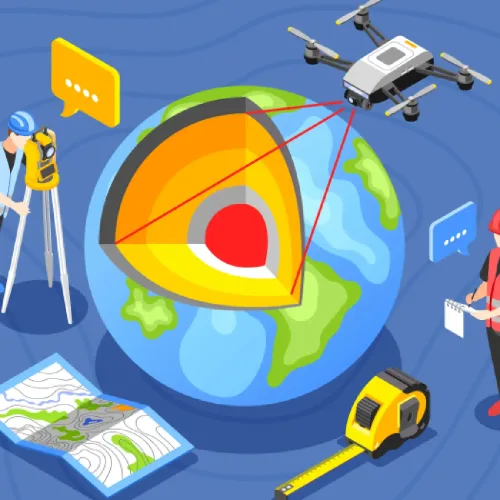People around the world are putting significant time and efforts into fighting with climate change through renewable energy. Renewable power provides the essential path to make our future greener. Clean sources like wind power, solar energy, water flow, and Earth heat help us conserve fossil fuels while cutting back carbon emissions into the atmosphere. The current share of renewable electricity at 29% proves the quick growth of this emerging industry. We must measure the ecological impacts of renewable energy projects and examine the part they play in environmental issues.
Our increasing use of renewable energy sources requires us to consider their impact on nature. These effects are often ignored. We need to review these effects. We need to take steps to protect nature when we transition to renewable power sources. This post examines the environmental effects of renewable energy and reports the ways to make these resources less harmful to nature.
The Growing Ecological Impacts of Renewable Energy
We need to start using renewable energy systems right away. The earth is facing serious climate problems. Our energy transition requires us to permanently end our use of fossil fuels. Moving swiftly to renewable power leads us towards sustainability. Energy production from fossil fuels generates 60% of the planet warming greenhouse gases and leads to rising ocean levels and worldwide weather extremes.

People seek renewable power because fossil fuel supplies will run out and mining these materials harms our planet. Accessible renewable power options, including sun, wind, water, and underground heat, produce minimal damage to nature. Our planet needs these renewable power solutions to stop global warming from worsening.
Several nations put their money into renewable energy sources even during the COVID-19 pandemic’s impact on global markets. This active investment reflects public trust in renewable energy for building a greener and less carbon-heavy future.
Current Trends in Renewable Energy
Nations across the world increase their use of renewable power sources, which include wind energy, sunlight, water flow, and underground heat. During 2020, solar and wind energy produced 10 percent of global power supply. Major renewable energy projects are taking place in leading nations, including China, Germany, and the United States.
| Country | Wind Energy (%) | Solar Energy (%) | Total Renewable Share (%) |
|---|---|---|---|
| China | 9.3 | 3.4 | 25.4 |
| United States | 8.2 | 2.7 | 17.8 |
| Germany | 11.0 | 9.5 | 45.7 |
This table highlights just a few examples, but it is clear that renewable energy is on the rise globally.
Ecological Impacts of Renewable Energy Expansion
Big renewable energy installations demand extensive land space, which disrupts local wildlife and transforms their habitats. Wind farms located in open lands have harmed these environments through construction.
1. Impact on Wildlife
Solar energy systems and wind farms pose significant threats to animals. The fast-spinning wind turbine blades can end the lives of flying animals. The flow of fish movement and water temperature stability suffer when hydroelectric dams operate. Making turbines and rivers safer for birds, plus creating fish paths, helps stop wildlife suffering.
2. Resource Consumption
Renewable energy technology requires lithium, cobalt, and nickel at specific stages when you create solar panels and batteries. The mining process harms nature when it ruins wildlife areas and produces environmental contaminants.
- Lithium: Used in batteries.
- Cobalt: Electric vehicle batteries depend heavily on these minerals.
- Rare Earth Elements: Used in wind turbine magnets.
New technology concepts combined with recycling practices lower our demand for minerals.
3. Waste Management Challenges
Waste from renewable energy systems creates difficulties for efficient disposal. The operating life of wind turbines and solar panels ends in batteries after their service, and disposal creates environmental dangers. Most waste from wind turbine blades ends up in landfills because recycling these parts remains difficult.
According to the European Environment Agency’s recent findings, demand for turbine blade recycling will rise as wind power generation increases. Firms work on discovering recyclable materials while their methods progress slowly.
Solar panels present better recycling options than wind turbine blades, yet their end-of-life disposal creates problems. As solar power expands globally, experts say that 2050 will bring about 80 million metric tons of unused solar panels. Despite ongoing research projects, the recycling industry cannot produce dependable solutions for solar panel waste.
“As renewable energy expands, so does the concern about the waste it generates. We must innovate to recycle and reduce this waste before it becomes an even bigger problem.” — Dr. Jane Goodall, Sustainability Advocate
Balancing Ecological Concerns with Renewable Energy Expansion
Renewable power creates noticeable environmental damage yet remains possible to overcome. Through sustainable decisions about power generation, we can grow our renewable energy systems while protecting nature’s systems. Our next section will examine how combining proper planning with wildlife-friendly technology and community recycling methods helps us find a sustainable energy solution.
1. Strategic Planning and Site Selection
Well-planned renewable energy projects succeed best when developers choose appropriate locations for minimum environmental effects. Energy developers use advanced Geographic Information Systems (GIS) technology to pinpoint areas that will create the least environmental consequences. These technologies generate precise environmental studies that monitor biodiversity and analyze water supply plus local habitat details.
Wind farm developers in the United Kingdom employ GIS tools to locate sites that minimize impact on birds during migration routes. Our advanced planning method keeps wildlife safe and lets renewable energy grow.
Big solar installations often go on abandoned contaminated land areas when installing new systems. Solar facilities generate power with less impact on the environment since they use abandoned spaces. California and other U.S. states support solar power projects on industrial sites by helping transform unproductive land into beneficial renewable energy facilities.
2. Wildlife-Friendly Designs
With wind and solar power impacts on wildlife in mind, the industry created innovative protective designs for renewable energy projects. Scientists test new wind turbine blades to stop birds and bats from crashing into them. Continuous bird detection systems on modern turbines activate when many birds appear to stop rotor blades from spinning. Wind power technologies prove effective in protecting endangered species and saving more lives.
Hydropower developers now build fish ladders into their projects so migratory fish can swim past the dam facilities. Fish ladders have proven useful for supporting salmon reproduction because these species need rivers for their migratory stages.
As part of their industry growth, renewable energy companies research better ways to protect wildlife areas from their activities. When wind farms stand in ocean locations with little human presence, they protect land habitats from ecological stress while generating power from wind energy.
3. Recycling and Circular Economy
As renewable energy companies expand their operations, they need better ways to recycle materials in environmentally friendly ways. The circular economy proves successful with its material reuse strategy that helps decrease renewable energy waste amounts. Solar panel recycling advances allow us to get back important materials like silicon, silver, and aluminum from used panels. The resulting materials can be transformed into new energy technology products, saving mining operations and reducing manufacturing impact on the planet.
Wind turbine blade makers test biodegradable composite materials that become easier to recycle when their life ends. Renewable energy field waste reduction receives possible improvement through new technology development.
4. Community Involvement and Indigenous Perspectives
Local people need to help shape energy projects to make them work better for nature and the environment. At this time Indigenous communities understand their local environments better than anyone else, so they give useful ideas about ecological impacts of renewable energy.
Wind and solar developers in Canada connect with Indigenous people who let them create energy projects that help local communities and protect nature. Partnering on renewable energy creates land protection alongside community business growth.
When stakeholders whose lives depend on the land participate in decision-making, renewable energy projects deliver both ecological and social fairness.
Sustainable Solutions to Address Ecological Impacts of Renewable Energy
Dependence upon a single energy source creates high vulnerability. Combining wind power with solar and two additional energy sources leads to a better and more durable electricity network. This approach helps both the planet and maintains diverse energy options to power our world.
1. Integrating Nature-Based Solutions
Nature-based solutions, such as putting solar panels over farms, can save land and help grow food. Restoring natural areas along with renewable energy projects can help protect wildlife and make the environment stronger.

2. Policy and Regulatory Support
Governments are important for making sure that renewable energy projects are good for the environment. Rules and laws that require checking the environmental effects can help make sure that development is sustainable. Global agreements like the Paris Agreement also help move towards cleaner energy.
3. Leveraging Technology and Innovation
New technology offers excellent possibilities through AI grid management and renewable power materials. These systems reduce energy expenses and environmental impacts.
Global Examples of Successful Sustainable Renewable Energy Projects
- Denmark uses offshore wind farms to demonstrate successful large-scale renewable energy deployment methods. They help renewable energy generate power without hurting the environment. The facilities are strategically situated in water areas to lower dangers to natural ecosystems.
- The floating solar plants in India help build energy capacity through their unique approach to limited space.
- New renewable energy projects across various regions prove how to integrate technology with environmental preservation. Germany demonstrates successful power grid integration by combining wind and solar energy systems.
Overcoming Challenges for a Greener Future
While challenges exist, such as dangerous products and climate protection against economic development, society shows continuous improvement in this space. Scientists now research better materials for renewable energy components as part of their work to create a greener future. The combination of green job opportunities and ecotourism connected to renewable energy creates jobs that support economic growth and help preserve our environment.
Conclusion
When developers manage renewable energy systems effectively, they can limit environmental impact. Right planning and new technology, plus sustainable efforts, enable us to achieve both less environmental harm and a cleaner world. Our solution involves designing systems that conserve wildlife combined with smart resource management and community involvement to let us thrive alongside nature. Strengthening our environment needs us to combine less carbon production with ecosystem defense.
Smart renewable power utilization helps us defend against climate change. We need to monitor both the environmental impacts of our decisions. We need to develop sustainable actions that safeguard our environment now and keep benefits for generations to come. Working together as a team will create new solutions while protecting our natural environment. All people must work together to develop renewable energy options.
“The road to a greener planet lies in ensuring our solutions today do not become problems tomorrow.”




